Tree Philodendron Removal
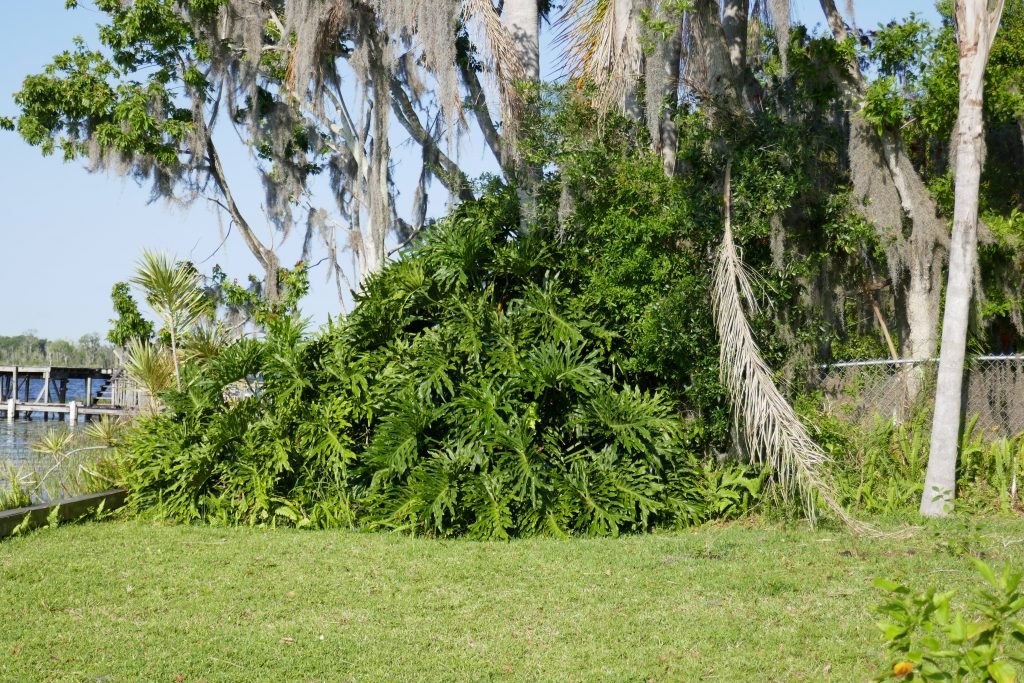
Tree philodendrons, Philodendron bipinnatifidum, are tropical, exotic-looking plants that can appear quite attractive in the landscape. However, left unattended, they become massive and readily take over their environment. Despite its name, the tree philodendron is actually a vine. It’s a vine on steroids and would be right at home in the movie Jurassic Park! Its main stems grow about 6-7 inches across with an insane number of aerial roots. It grows laterally, sprawling along the ground, and its aerial roots shoot out from everywhere to anchor it to the ground or to anything it can wrap around to support itself.
The aerial roots are stringy, and fibrous, making them difficult to cut through with a sawzall. Or any saw for that matter because the blade teeth and sawing motion will get hung up on the fibers making a clean cut impossible. I found that large loppers are the best tool because of their clean cutting edge. The good news is that the aerial roots will not sprout new growth. If the newly cut aerial roots aren’t a trip hazard, and you don’t need the space immediately, they can be left to break down over time without digging them out with a shovel. You can choose to lop them off just under the soil surface making that part of the job complete.
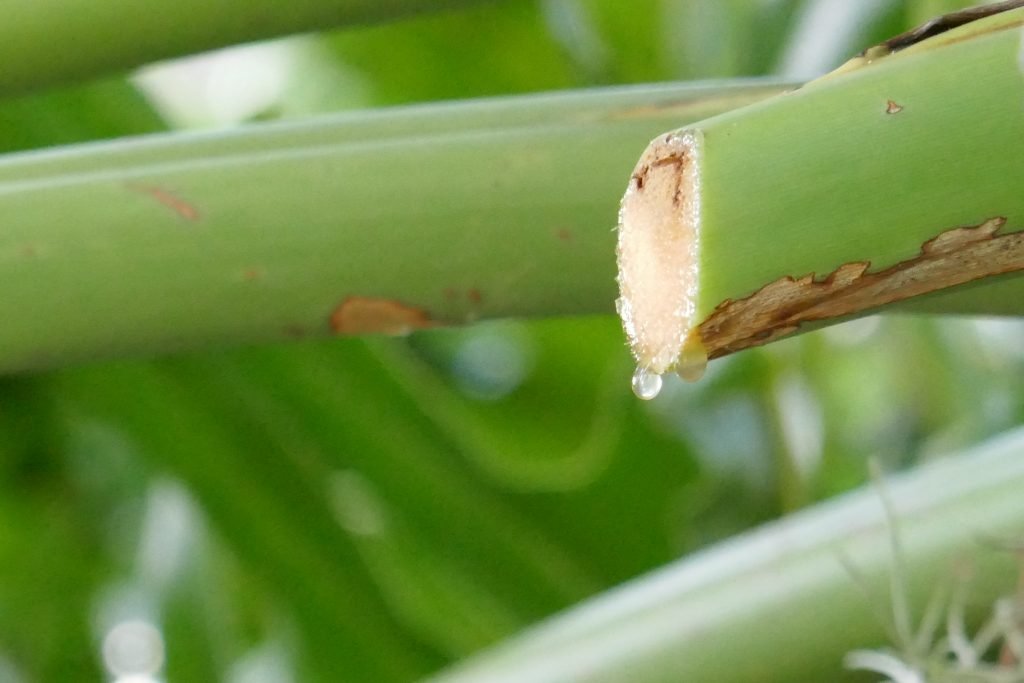
The main trunks WILL re-grow, and re-sprout, new leaves within a month or so and need to be removed. A cordless sawzall works best here because the main trunk does not seem to be as fibrous as the aerial roots. If you cannot remove the trunks all at once keep an eye out for new leaves and return to the job of cutting or digging them out as soon as you see new growth appear.
Recently, I bought a property containing some very old, and well established, tree philodendrons. This created a problem for me as they took up an inordinate amount of my green space and had displaced the native plants and wildlife that would otherwise live there. The individuals in my yard also had wrapped their aerial roots around nearby trees, displaced native vegetation and wildlife, and were even damaging my fencing. The specific plant I focused on for this article was located right next to the lake where I have plans for native Florida plants. I don’t know the age of this particular plant specimen for sure, but I would guess it was something like forty to fifty odd years. It had become huge, taking over the entire corner of my yard, and its aerial roots had wrapped around nearby trees and the fence. It was just an overall hot mess for me.
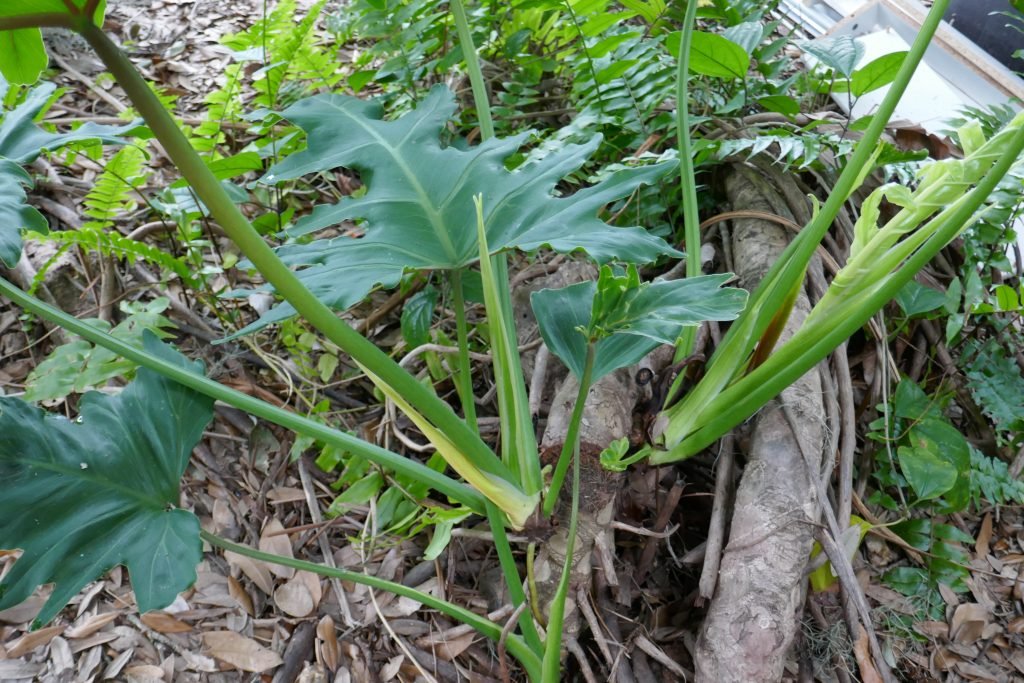
So, I did what any native plant loving land manager would do and removed it. First, I did a quick Google search but found nothing about physical removal that didn’t involve spraying, carcinogenic, herbicides on them. I did find lots of info about how to grow them. So, lacking any useful advice on the subject, I thought it best to document my experience and possibly lend a hand to someone else tackling this job in the future.
My motto is live and let live and if you enjoy exotics then by all means you should plant them and nurture them. However, in my case I wanted to reclaim my property from the giant tree philodendron and make room for native plants.
My problem area was at my fence line. The plant had been allowed to grow on its own for so long that it had become entwined in the adjacent chain link fence and was actually causing damage to the fence as well as nearby trees. I’ve learned the hard way to avoid planting directly against the fences because plants become entangled in them with their roots and limbs pulling them apart making fence repair an even bigger task than normal.
It is human nature to want to plant on the fence line because it can be difficult to give up that little bit of land, but in the long run, maintenance and fence repair is so much easier if you leave space to work and maintain the area. As trees mature their lower limbs can be pruned to provide a clear area for mowing underneath and the fence can be easily accessed for maintenance.
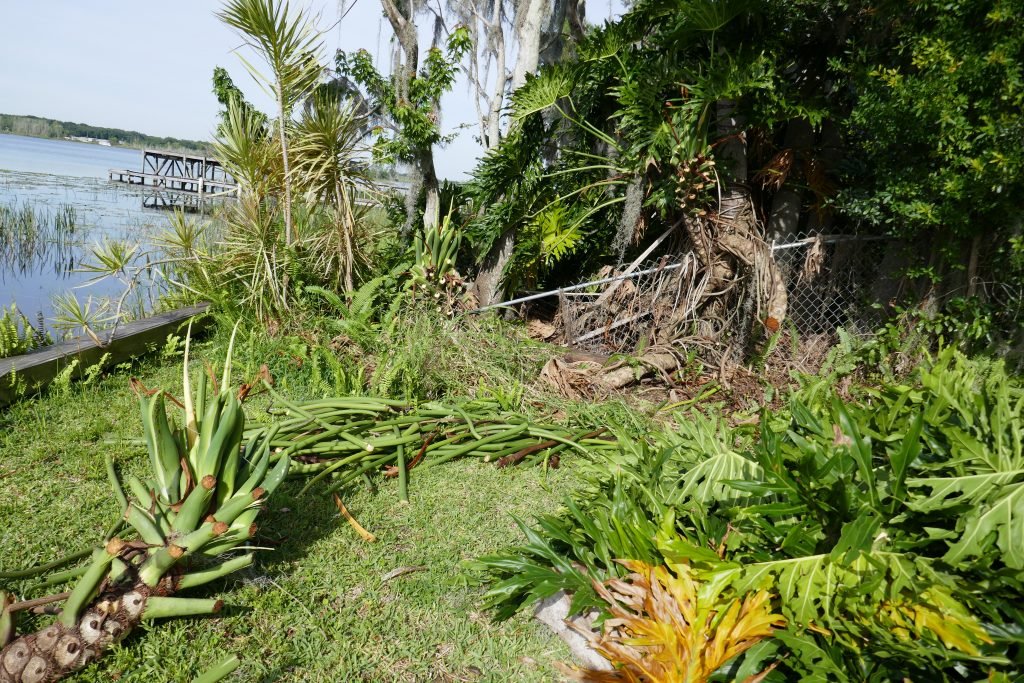
At maturity, tree philodendrons are quite large and so removing one is a bit of a pain, but I came up with a plan that worked well for me. First, I purchased a cordless Bosch sawzall for cutting through the trunks and a sturdy pair of Fiskars bypass loppers. Since acquiring the sawzall I’ve used it to remove all sorts of exotics from my property such as shefflera and yellow trumpet tree. Unlike a chainsaw blade the sawzall blade can be put into the soil so I can cut down exotics just below ground level, to avoid regrowth, and most times avoid having to dig them out with a shovel. Please know that I receive a small commission, as an Amazon Associate, should you follow the links and make a purchase from this article.
The biggest problem with removing tree philodendron is that the entire plant is filled with copious amounts of fluid. The fluids leaks out of every place it is cut and contains oxalic acid which is irritating to the skin. Not only does it exude fluid it also exudes a sticky orange sap. The leaf stems secrete a thin, colorless, liquid and the aerial roots exude a thick, sticky, orange liquid.
The liquid from the leaf stalks is thin enough to wash off with water during the removal job. However, the aerial roots are another story because they produce an orange sap that is very sticky and is difficult to clean off of anything it touches. It did seem to come out of my clothing in the wash, but can stain, and some residue can be left around the house, and on tools and gloves, so I prefer to avoid it at all costs. If you have a reaction to any plant sap it’s best to be very cautious with this plant when removing it especially the sap which will stick to your skin. The aerial root sap makes the job pretty annoying once it finds its way onto your clothes and tools so I save cutting the aerial roots for the last part of the job, use disposable gloves, and place the cut portions in a separate pile to avoid accidentally bumping into them and spreading the orange gunk everywhere.
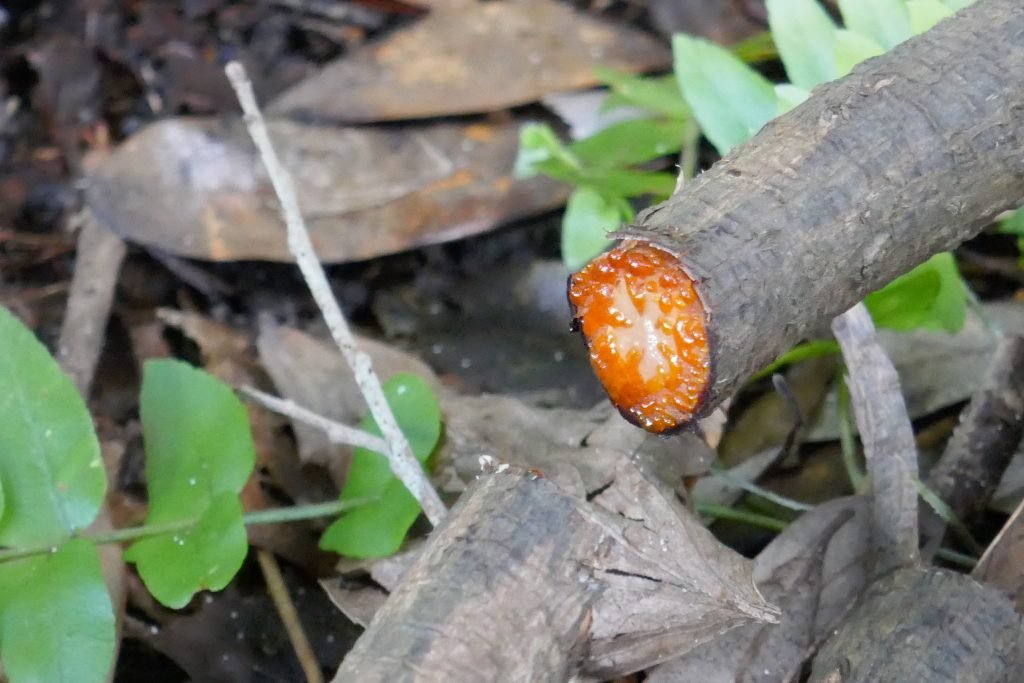
My strategy for tree philodendron removal is to cut the leaves (where they emerge from the main stem), then the trunk, and finally the aerial roots. I initially tried to cut randomly and then break the plant down into a pile once it was on the ground, but that proved to be a lot more difficult than just cutting the parts down in a specific order.
I cut the leaf stems off all along the main trunk as close as possible. If you start by cutting the leaf off of the stalk it will drip liquid for hours so it’s best to have it running down the main trunk instead of down your head and neck while working underneath it. This also avoids making a huge pile of the leaves, with attached stems, that become a tangled mess of oozing liquid that has to be dealt with later. A tidy pile of leaves and stems is so much easier to handle. Also, if you’re anything like me, and need lots of breaks during the job, the cut portions will ooze for days so it helps to have them separated so you can come back to them as time and energy permits.
Once you cut the leaf stems off the main trunk you are ready to tackle the main trunk itself. This can be cut into manageable pieces properly sized to be carried to the curb for pickup. Just be sure to move the trunk out of your way because it will become a sticky mess once the sap starts oozing out of the cuts.
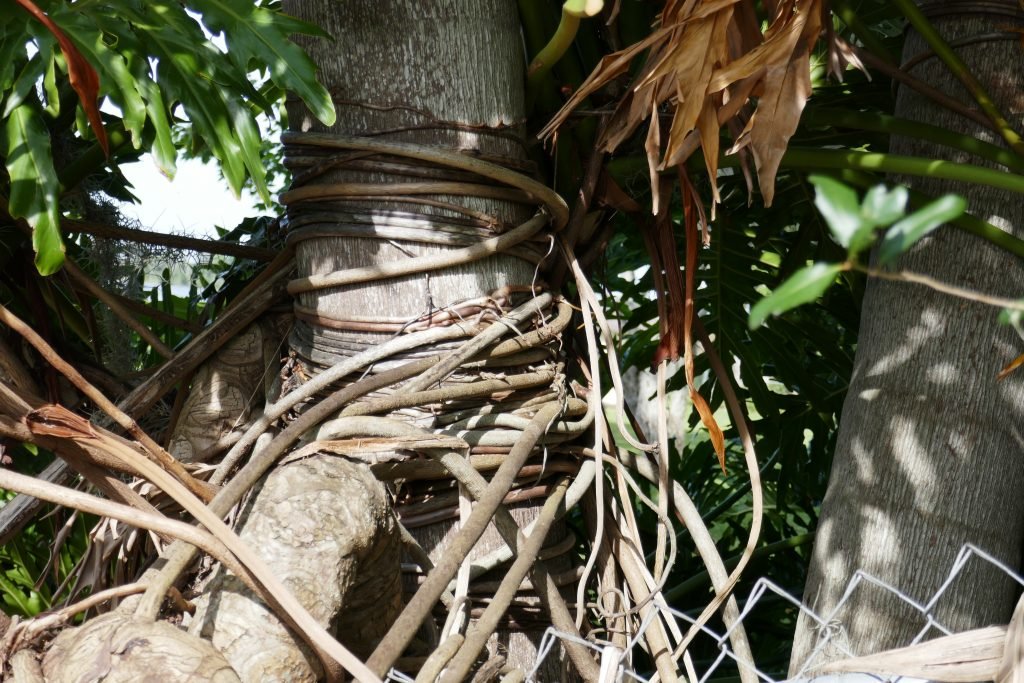
Processing the tree philodendron this way may make me sound like the anal-retentive gardener, but I use curb-side pick up for some yard waste and this makes it much easier to deal with the debris from this particular plant and a big bonus is that I avoid being covered in irritating plant liquid while I work. I’m a big fan of taking the easy path when it comes to gardening and in this case, being neat and organized just happens to be the easiest way to go unless you have a work crew that can cut and remove it for you in one shot.
I’m not normally an advocate for curb-side plant debris pick up because I prefer to incorporate brush piles on my property for the benefit of the local wildlife. However, in this case I really had no choice since there was such a large quantity of debris that would keep oozing liquid, plus and my space is so limited I prefer to use hardwood tree debris for brush piles.
In the end, removal and processing of any plant, and its debris, depends on your desire and goals for your yard. For me, in this case at least, the choice was an easy, if somewhat messy one … remove as many tree philodendrons as possible to make way for native plants.
Now go make room for some native plants today!
